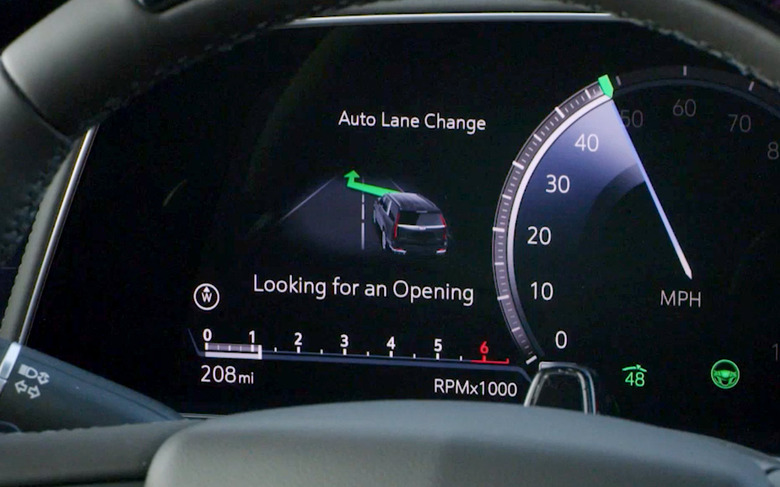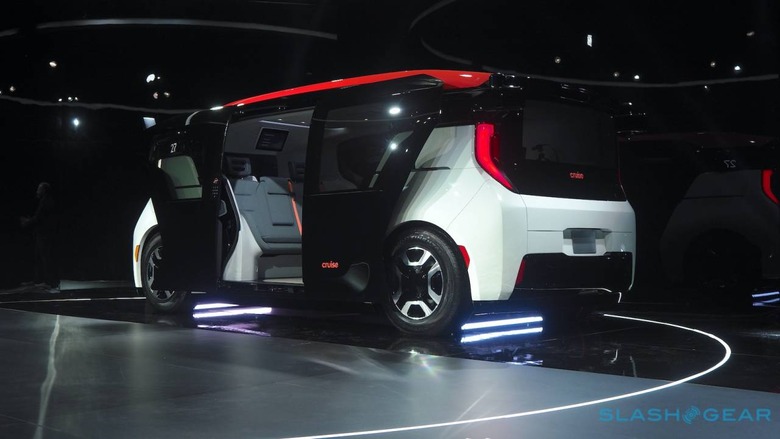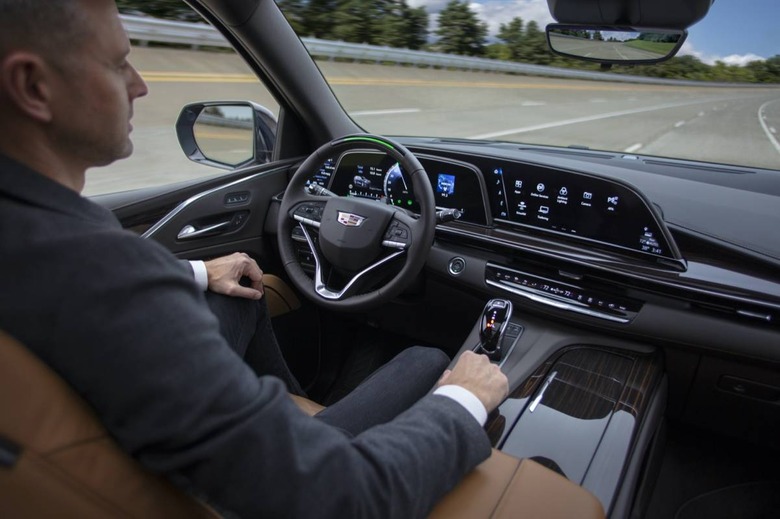GM Ultra Cruise Will Expand Hands-Free Driving Onto City Streets
Cadillac Super Cruise is only starting to roll out to more than a single car this year, but GM is already working on a new version of the semi-autonomous driving system to better take on Tesla's Autopilot. GM "Ultra Cruise," as the system is being internally referred to, will apparently expand Super Cruise beyond its current operation on divided highways, and into urban and other areas.
Slow and steady for Super Cruise
First offered in 2017, Super Cruise has so far been limited to a single model in Cadillac's range, the CT6 luxury sedan. It offers hands-free Level 2 assisted driving, with the car responsible for maintaining its speed – and pace with other traffic – as well as its position in the lane.
The driver's attention on the road is gauged using an eye-detection camera mounted on the steering column, with alerts flashing up if they're not monitoring Super Cruise's performance. That way, they don't have to keep their hands on the wheel, as is required with other driver-assistance systems.
GM uses high-definition maps of divided, limited-access highways in the US and Canada, which were created by using LIDAR and precision GPS. By installing a high-precision GPS sensor in the car, it can better pinpoint the vehicle's location on the road, but without needing to include an actual LIDAR sensor, which is traditionally very expensive. However it also means that Super Cruise deactivates when off those specifically mapped routes.

It's not the only limitation drivers have encountered. Only recently has GM added automatic lane changing to the system, where Super Cruise is able – after the driver taps the indicator stalk – to move between highway lanes on its own. That's something Autopilot, as well as adaptive cruise control systems from Mercedes, BMW, and others, have offered for some time now.
The biggest change for Super Cruise, though, will be availability. Cadillac will offer it on the new Escalade luxury SUV, as well as on the CT4 and CT5 sedans, which will make it considerably more attainable for drivers. At the same time, GM plans to offer Super Cruise on vehicles from other brands in its portfolio. By 2023, the automaker has said, it aims to offer the system on 22 different models.
Ultra Cruise will fill in some blanks
Outside of the roughly 200,000 miles of highway that Super Cruise currently operates on, the system shuts off and drivers are left with regular cruise control. That's something GM is working on addressing, according to Doug Parks, GM executive vice president of Global Product Development, Purchasing and Supply Chain.
"Ultra Cruise's domain would be all driving, all the time," Parks said during an appearance at the 2020 Car of the Future Symposium, CNBC reports. It would operate on city streets, the exec explained, as well as on exit ramps from highways. However, Parks clarified, it would not be a fully autonomous, Level 4 or 5 system.

That would be left to Cruise, which unveiled its Origin autonomous vehicle earlier in 2020. That will be used for ride-sharing and robo-taxi purposes, doing away with traditional controls altogether. It'll be based on GM's new Ultium all-electric architecture, which will also underpin the new Cadillac Lyriq luxury crossover and GMC Hummer EV truck.
"We're trying to be focused in on how can we continue to give drivers additional capability, above and beyond the highways, at a priceable level," Parks said. Currently, Super Cruise is standard on the CT6 Premium Luxury trim and higher, a car which starts at $75,490.
GM still has plenty to explain - and new rivals coming
Right now, the automaker isn't particularly keen on giving out information on Ultra Cruise – or whatever the system ends up being called when it launches officially. "We do not have a name or anything specific to announce today," a GM spokesperson said of Parks' teasing, "but stay tuned."

GM isn't just facing Tesla, however. While Autopilot is arguably the best-known of the driver assistance systems on the market right now – and probably the one with the most confusion among drivers around what it can, and cannot, do – it's not alone in looking to take on more of the responsibilities on the road.
Volvo, for example, announced earlier this month that it would be including self-driving hardware on its cars from 2022. That will include a new LIDAR sensor built into the upper windshield, that will be used for its Highway Pilot system.
Unlike Volvo Pilot Assist, the Swedish automaker's current system, Highway Pilot will be a Level 3 system that can independently control the car without human involvement. That will only take place on select roads, however, which Volvo describes as "individual geographic locations and condition." The assumption is that, like GM did with Super Cruise, Volvo will rely on high-definition mapping to ensure Highway Pilot can only be activated in areas the company is certain it can be implemented safely.
